Each fall, many of us busily prepare for the first big rain of the wet season. Homeowners might clean out gutters and put away patio furniture. Cities often run their street sweepers and vacuum out storm drains to prevent flooding. This past fall, the Estuary Program prepared for what is known as First Flush monitoring.
What’s the harm in a little runoff?
In the course of daily life, pollutants build up on our streets and sidewalks. Things like oil spills from cars, fertilizer from landscaping, pet waste, and trash can gather. When the first big rain arrives, these pollutants are washed from our yards and streets, down the gutters, and into the nearest storm drain.
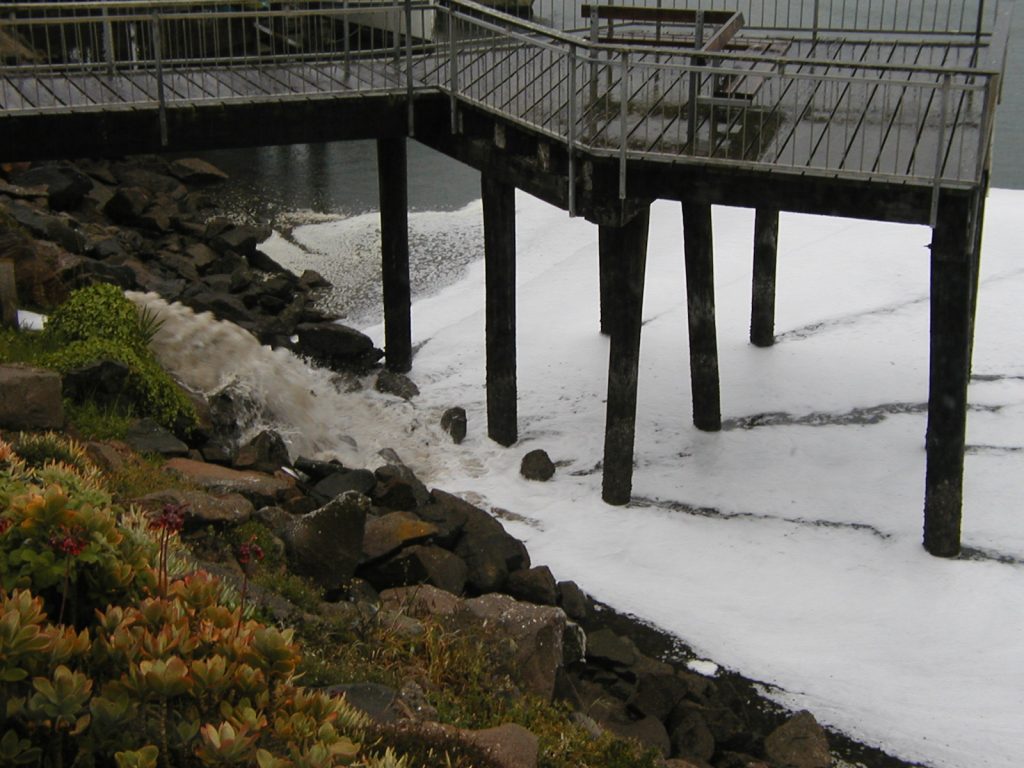
First Flush monitoring is important because the first storm of the season often has the highest pollutant load of any of the storms during the year, due to the length of time since the last storm. The more time between storms, the more pollutants build up in streets and yards.
Paved areas like sidewalks, patios, and parking lots can exacerbate the impact of runoff because the water isn’t able to sink into the earth in these areas. Instead, it rushes to the nearest drain or straight into the bay, carrying with it the pollutants it picked up along the way. One area of concern in our watershed is the large paved parking lot at State Park Marina. During storms, rainfall runs off the parking lot and straight into the bay.
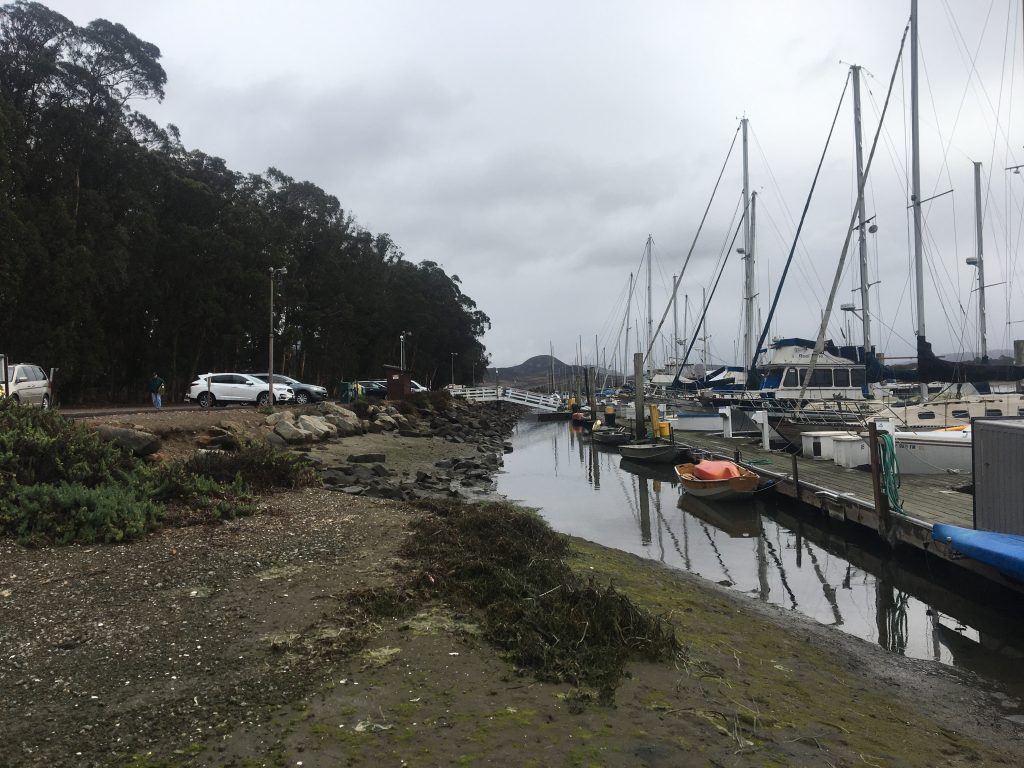
2020 First Flush Monitoring
The Estuary Program partnered with a local consulting firm to conduct the 2020 First Flush monitoring at State Park Marina. In the early morning hours of November 7, a storm generated just under a half an inch of rain. During this storm, technicians collected rainwater running off the parking lot just before it entered the bay.
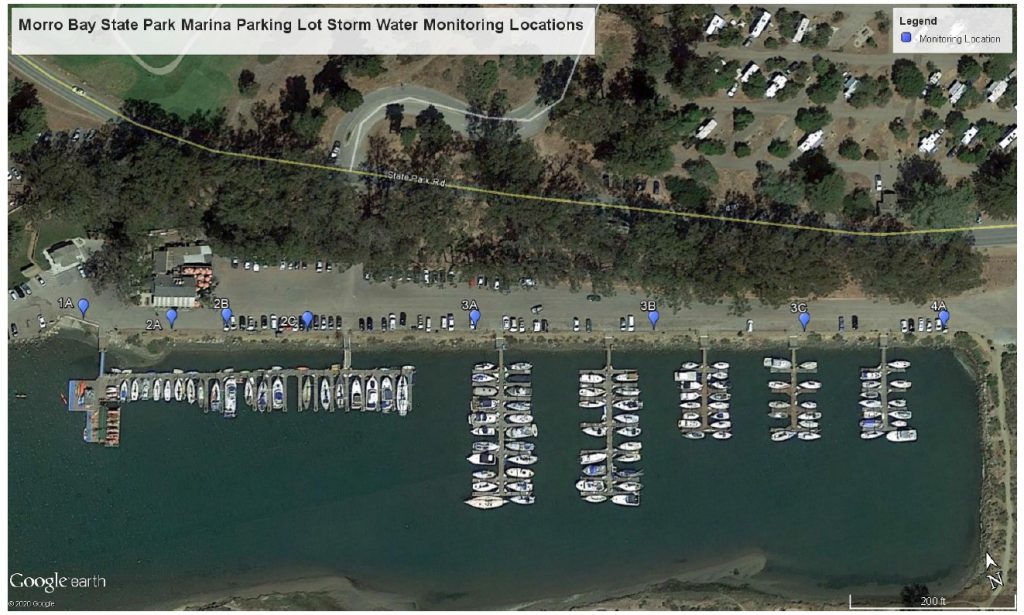
While some parking lots have grated drains to collect runoff and large pipes to whisk it away, the marina parking lot has cuts in the curb that allow the stormwater to exit the parking lot and run into the bay.
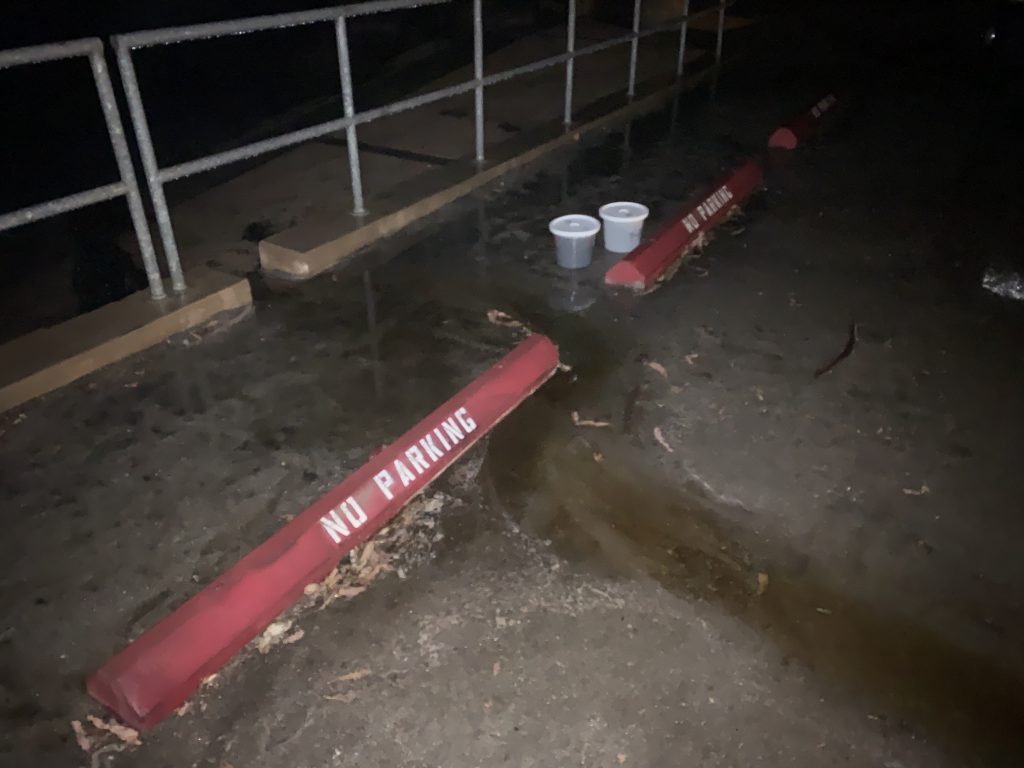
The samples collected were analyzed for bacteria, sediment, oil and grease, gasoline, diesel, and metals. These are the types of pollutants that you expect to find in an area with extensive vehicle traffic.
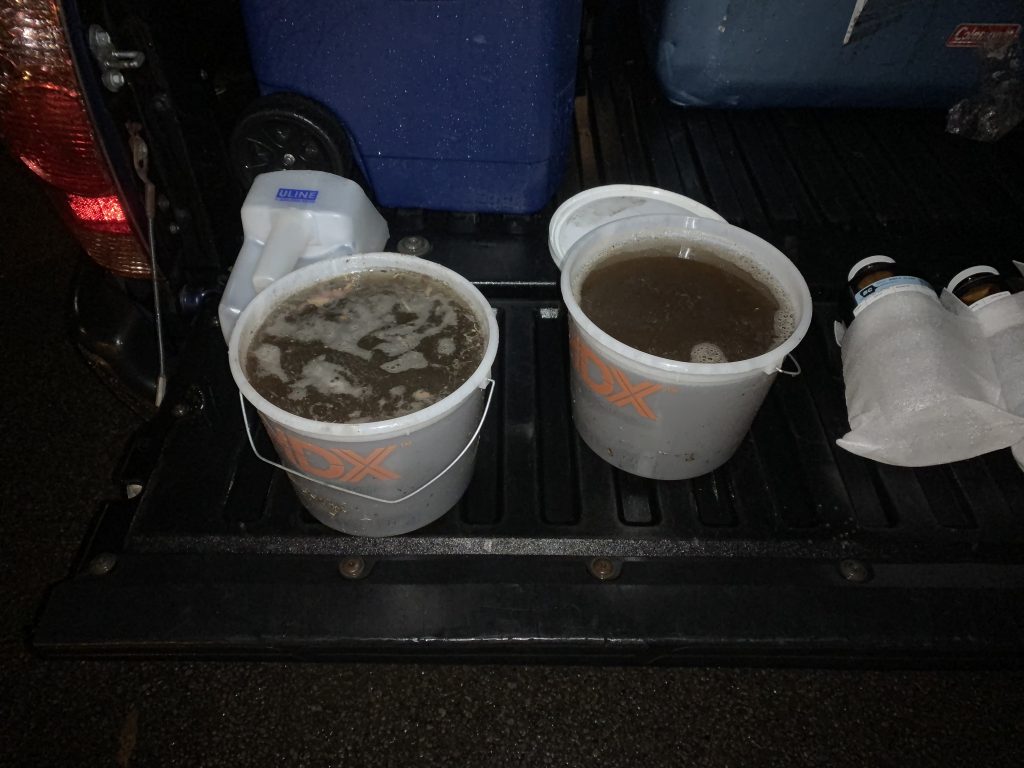
The Results Are In
The data from the eight sites was compared to State Water Board targets that help facilities determine if their stormwater runoff is clean. Ideally all monitoring results are lower than the target levels. Here’s what the data from the November 7 storm showed:
- Bacteria levels were high at all sites, and up to seventy-five times higher than the level safe for swimming.
- Copper was detected at all eight sites and exceeded the target level at one site. Copper can come from engine oil and brake pad decomposition, and it can be toxic for aquatic life.
- Zinc was detected at seven of the sites and exceeded the target at one site. Zinc in stormwater can come from vulcanized rubber, galvanized metal, oils, and lubricants. Zinc can also be toxic for aquatic life.
- Lead was detected in low levels at all sites but did not exceed the target for concern. Historic stormwater monitoring data from Morro Bay has never indicated widespread issues with lead.
- Total suspended solids is a measure of sediment, such as soil, in the water. All eight samples had levels between five and thirty times higher than the target. This much sediment draining into the bay can cloud the waters, preventing sunlight from reaching plants like eelgrass. The sediment can also transport pollutants such as excess nutrients. While nutrients like nitrogen and phosphorous are essential for healthy plant growth, too much of these compounds can harm plants instead of helping them grow. Harmful metals can also adhere to the sediment and end up settling into the bottom of the bay where plants root and wildlife forages for food.
- Oil and grease was detected but at levels below the target.
- Traces of gasoline were detected at three of the sites, and traces of diesel were detected at all eight sites. Specific targets for traces of these fuels have not been set for stormwater runoff.
Make a Difference
What can you do to help protect the bay from stormwater runoff? There are some simple things:
- Keep your vehicles in good repair to avoid oil leaks, and visit a mechanic to change your oil and patch up any leaks you do find.
- When your car is dirty, take it to a car wash instead of washing it at home. Car washes recycle water and keep soap, dirt, and anything else that washes off your car from running into a storm drain and out into the bay.
- Prevent soil from running off your yard by installing ground cover, like native plants and mulch, or by building a rain garden. These options all slow down and hold runoff, giving it a chance to sink into the ground.
- Clean up pet waste to prevent bacteria from reaching the bay.
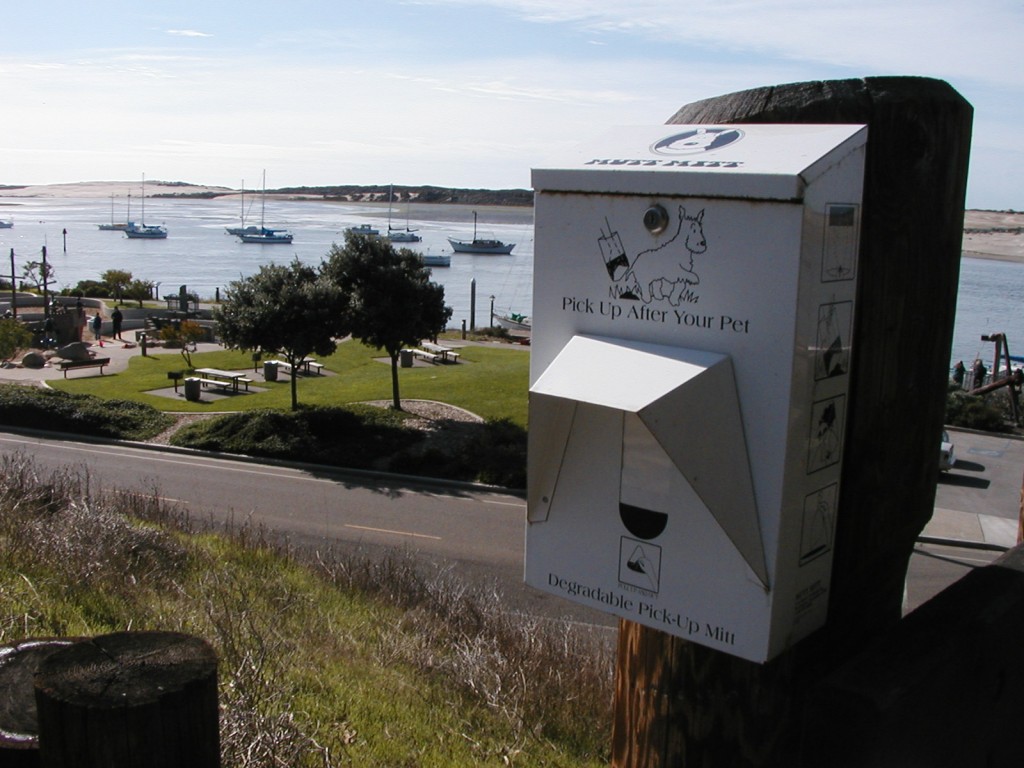
Be sure to protect yourself from bacteria and other pollutants by staying out of the bay and ocean for 72 hours following a storm, as advised by Surfrider and Heal the Bay.
Finding smarter, cleaner solutions
The Estuary Program is partnering with California State Parks and the Ocean Protection Council to redo the parking lot at the Morro Bay State Park marina. The current parking lot allows runoff to flow directly into the bay without any treatment and is in poor shape, with cracks and gravel that can contribute sediment to the flowing runoff. For the project, the parking lot will be repaved and graded to direct runoff into stormwater treatment features such as bioswales. These vegetated drainage areas slow the flow of water and filter out pollutants before it reaches the bay. The project is expected to be completed in the next year.
Help us protect and restore the Morro Bay estuary!
- Donate to the Estuary Program and support our work in the field, the lab, and beyond.
The Estuary Program is a 501(c)3 nonprofit. We depend on funding from grants and generous donors to continue our work. - Support us by purchasing estuary-themed gear from ESTERO. This locally owned and operated company donates 20% of proceeds from its Estuary clothing line and 100% of Estuary decal proceeds to the Estuary Program. Thank you, ESTERO!
- Purchase items from the the Estuary Program’s store on Zazzle. Zazzle prints and ships your items, and the Estuary Program receives 10% of the proceeds. Choose from mugs, hats, t-shirts, and even fanny packs (they’re back!) with our fun Estuary Octopus design, our classic Estuary Program logo, or our Mutts for the Bay logo.
Thank you for your support!